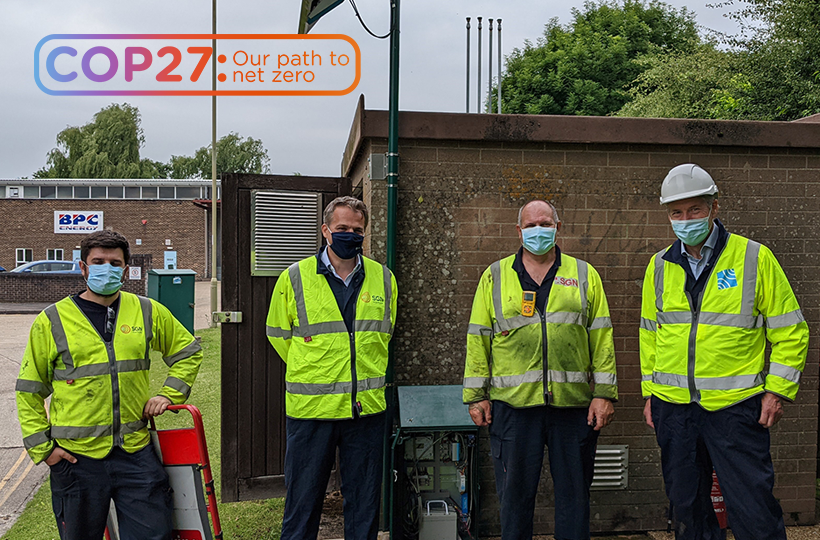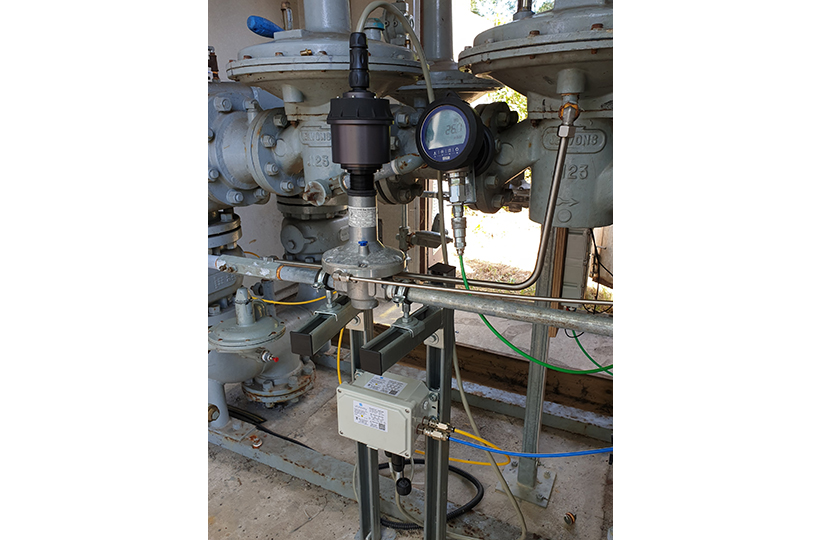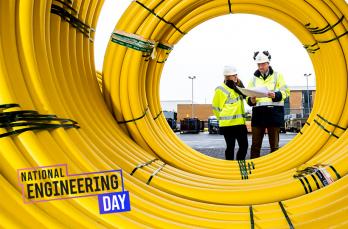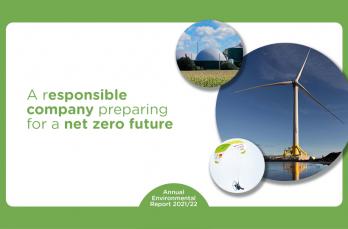
In the first instalment of our COP27 series, we're highlighting the work we're doing here and now to further reduce emissions from our natural gas network.
A unique pressure control and management system is being installed at 265 of our gas governor stations to significantly reduce methane emissions across our gas distribution network in southern England. This is an important step in our COP27 commitments to reach net zero emissions by 2045 and prepare our network for the transition to green gasses like hydrogen.
Governor stations regulate gas pressure in gas distribution networks to ensure gas is delivered safely to homes and businesses.
All governor stations need to be adjusted so the system has enough pressure to manage gas demand throughout the year. Currently this process is carried out approximately four times a year, but demand varies daily and even hourly. This can lead to excess pressure in gas networks, which has the potential to increase emissions. Reducing emissions is an important part of the RIIO-GD2 Environmental Action Plan (EAP) and our Environmental Strategy.
We've been working with smart gas grid technology developer Utonomy to optimise pressure in our gas networks since 2019. Funded by Ofgem’s network innovation allowance, we've collaborated to successfully trial a unique pressure control and management system.

A new Utonomy Pressure Management System on a governor station in Romsey, Hampshire.
The new system enables our gas governors to be remotely and continuously adjusted so network pressure matches demand. This means lower average pressures in our gas network, and consequently, fewer emissions. It will also reduce operating costs.
Over the next three years, we're investing £2.6 million to install the new system at 265 governor stations across our network in the south of England cutting emissions by 2.9 GWh, or 3,600 tCO2e per annum. This is equivalent to taking 2,430 petrol cars off the road.
SGN Network and Safety Director Paul Denniff said: “Pressure monitoring and control are essential for accurate network analysis and network modelling. They are a key tool in helping us to reduce emissions in our networks even further.
“While our systems were already performing well, we realised that improvements could be made by using the latest technology. It has been a pleasure to work with Utonomy to develop an innovative remote control pressure management system. This will help us make further reductions in methane emissions ensuring gas networks become greener, smarter, safer and more resilient as we progress through the energy transition towards a sustainable future.”
Adam Kingdon, founder and CEO of Utonomy, said: “SGN is already best in class in pressure management, with average network pressures as low as you can get with current technology. That said, they are continuously looking at ways to reduce methane emissions even further.
“Developing a solution using the latest technology to optimise the pressure in the network really was a collaborative process with SGN, and we are thrilled that, after successful field trials, Utonomy’s technology will be rolled out at scale across the network.
“As well as reducing emissions, our technology also helps to prepare the networks for the low-carbon transition by helping operators to control pressures and prioritise the feed-in of green gas such as biomethane and hydrogen.”




